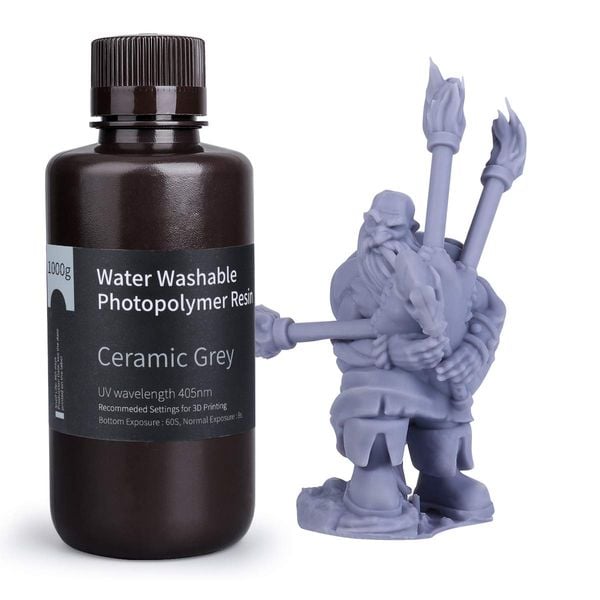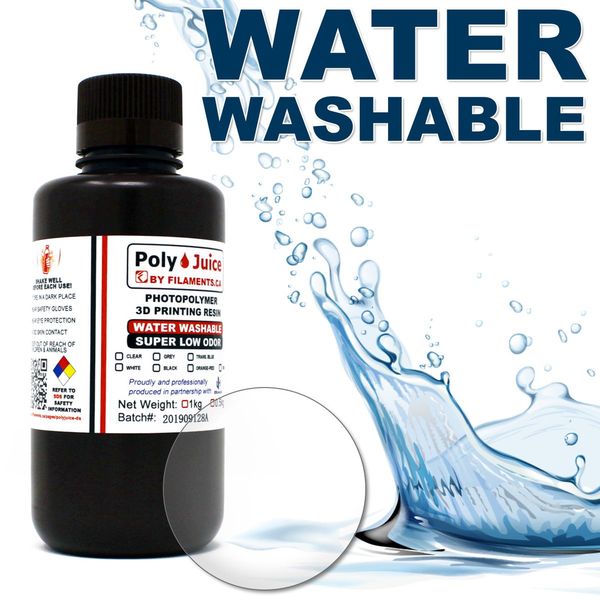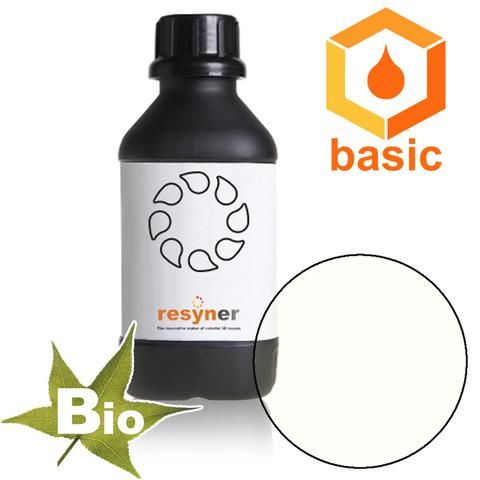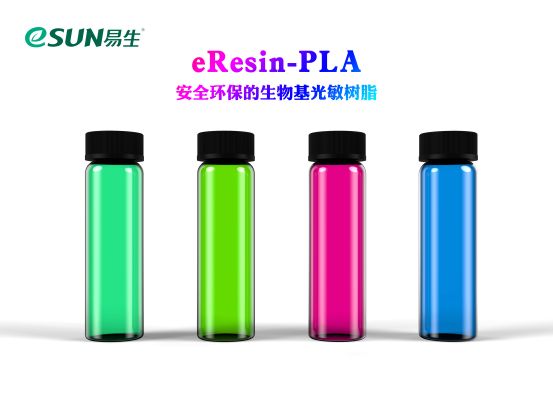
I’ve been on a bit of a quest to find some truly safe 3D printer resin, and I’m not sure there’s actually such a product.
Resin 3D printers, whether by laser, LCD or DLP, can produce some of the highest-quality 3D prints. With the current low prices of such equipment, there’s quite a market for resin, and this has resulted in reasonably good prices (at times) as well some a widened choice of materials.
You can find all kinds of different 3D printer resins these days: strong, flexible, clear, colorful, heat-resistant, biocompatible, and many more options.
But one thing that seems a bit elusive is a resin that is actually safe.
Don’t get me wrong, ALL 3D printer resins can be USED safely if you follow the procedures and don’t mess up. But often mess-ups do happen, either accidentally or otherwise.
There are several aspects of resin 3D printing that concern me for this type of application, and I’m hoping to find something that counteracts all three.
Resin Odor
Most photopolymer resins emit a rather horrible odor. Sometimes these are successfully captured by the machine, and sometimes not. The less expensive desktop resin 3D printers often require you to manually pour the resin into the tank, thus exposing it to the air.
That smell is actually your nose detecting loose particles in the air. The more you smell, the more particles are present. In a sense, you are a kind of pollution detector.
If these particles are truly airborne, then you could potentially breathe them, thus exposing your lung tissue to whatever they might be. It’s for this reason that it’s strongly recommended you perform the 3D printing in a ventilated location. Our lab has an air exchanger that does just that.
Resin On Skin
Photopolymer resins are typically quite toxic. Sometimes very toxic. Thus you really shouldn’t be allowing them to touch any exposed portion of your body: skin, eyes or whatever.
If you accidentally do so, it’s quite possible that not much may happen immediately. That’s because your body may gradually grow a negative reaction upon repeated exposure to the chemical. Then, at some undetermined future point an exposure will result in a bad reaction, which could be blisters, breathing problems or worse. The best idea is to never let the photopolymer resins touch you.
This is why it’s strongly recommended you always use nitrile gloves when handling resin. You should also wear goggles and probably a lab coat, too.
Flammable IPA
Cleaning completed resin 3D prints is frequently done with IPA, or isopropyl alcohol. This commonly used solvent is able to dissolve the inevitable leftover resin drips that are on the solid surface of the 3D print when it emerges from the 3D printer. If you don’t remove them, subsequent curing will solidify the drip and you’ve spoiled the part.
The IPA washes away the resin, and this is usually done in a pair of wash tanks, each filled with IPA. The first tank is the “dirty” tank that takes the bulk of the resin away. The second tank is the “final clean” tank, and it gets rid of any residue from the first tank.
This process works well, except for two things. The dirty IPA is quite dangerous because the alcohol can open pores of the skin, and that could allow dissolved photopolymer resin a more direct route into your body if exposed to skin.
Secondly, and probably more importantly, the IPA is extremely flammable. Caution must be used when handling and storing these large tanks of flammable liquid to avoid a severe fire.
Using 3D Printer Resin Safely
These factors together pose a problem in setting up a 3D printer. While you could easily overcome all of these challenges in a workshop or factory, they are more difficult in a consumer setting.
With the introduction of low-cost resin 3D printers, I fear that many operators are actually using these devices at home, and face all of the risks mentioned above.
While some may certainly take appropriate precautions, I’m sure many don’t. I think it’s just a matter of time before we start seeing an increasing number of people with toxic reactions or house fires.
Is there anything we can do about this?
Water Washable 3D Printer Resin

There may be. I’ve recently heard of some alternative resins that might be able to get at this problem.
One type of resin is the “water washable” resin. The most popular type I’ve seen comes from Elegoo, which produces the ELEGOO Water Washable 3D Printer Rapid Resin. This substance is different in that you don’t use IPA to clean it after 3D printing. Instead you simply wash the print in warm water!
This means you can do away with the large vats of flammable IPA, and that should significantly reduce risks to safety. These materials also don’t emit nearly as much odor as traditional resins.
However, the ELEGOO product is not quite complete: it’s still toxic, and you cannot touch it. You still must wear gloves, provide ventilation and the rest. Even the dirty water cannot be dumped down the drain: it still contains dissolved resin, and you must let the water sit in the sun to solidify the residual resin before you sift out these solids and dump the water.
There’s more problems with some of these water-washable resins: they can be expensive at times, and some report brittle 3D prints. Those factors could constrain their usage.
Non-Toxic Resin

Some photopolymer resins are billed as non-toxic. That sounds pretty good, as the parts made from these materials are intended for use in or on the human body, like dental appliances, for example.
However, the non-toxicity refers to the prints made from the resin, not the resin itself. For example, Formlabs’ biocompatible materials contain this statement:
“Samples printed with BioMed Clear Resin has been evaluated in accordance with ISO 10993-1:2018 and ISO 7405:2018, and has passed the requirements for the following biocompatibility risks:”
It goes on to explain the samples will not be cytotoxic, irritant, sensitizer, genotoxic and are non-toxic. But it’s samples, not resin. Thus you still have to wear the gloves and goggles.
Eco-Resin

Some resins are billed as eco-friendly, and perhaps they could overcome some of these difficulties.
Well, actually not. While the eco-resins are made from natural sources, like soybeans or corn, they still can be toxic and still require IPA baths. But you can feel eco-good when using them.
Is There A Truly Safe 3D Printer Resin?
What I looked for was a resin that is:
- Biocompatible while in resin form
- Does not emit odors
- Does not require IPA for cleaning
- Eco-friendly
After considerable searching online, I don’t think such a resin actually exists. You can find resins that do one or two of the above, but not one that does them all.
Perhaps it has something to do with the chemicals required to intiate polymerization? I’m definitely no chemist, so perhaps more knowledgeable readers could add a comment on this. If this is the case, there might never be a truly safe 3D printer resin on the market.
But if it is possible, I suspect it could become quite popular for hobbyists using resin 3D printers in less than optimal operating conditions. If you know of such a beast, please let us know!


Kerry,
Did you find any that are biocompatible while in resin form? I can live with the other 3 issues if this one is solved.
Thank you,
Ed
Thank you for this article, like really!
So many folks just don’t think about health issues with 3D printing and place printers inside, with bad ventilatio and/or are careless when or while handling printing materials. Especially resin printers are dangerous! Really! Only yesterday, I’ve seen one placed in a school corridor! Next to a filament-style printer. No ventilation, no gloves, no proper waste management or whatever. Hazardous. Dangerous!
Thanks for this information. Very clear exposition but easy to read and concise. I will follow and be back.